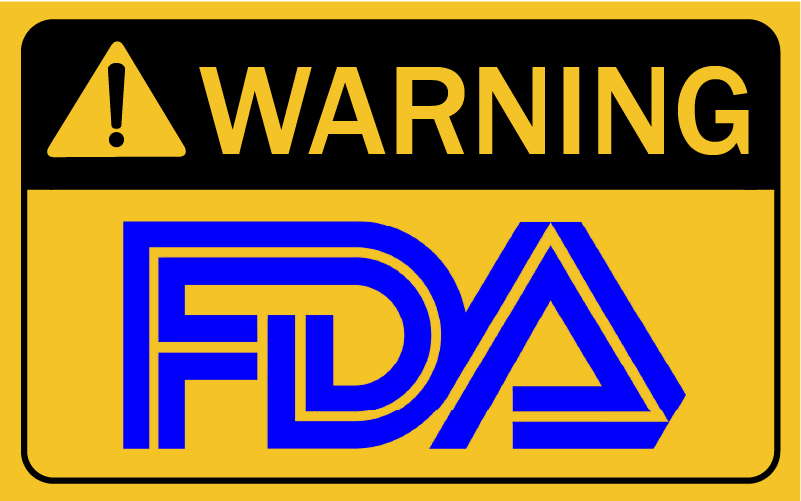Super strong skin peels have come to the attention of the FDA. Citing the claims made for the skin peels, the FDA has issued warning letters to four cosmetic companies, as well as Wal-Mart and Amazon, for introducing unapproved new drugs into interstate commerce.
Are skin peels cosmetics?
Typically, yes.
Cosmetics cleanse, alter the appearance, increase attractiveness, and beautify. Exfoliants and skin peels are classed as cosmetics because they are “improving attractiveness” and “beautifying.”
However, if a company starts claiming that a skin peel (or any exfoliant … or even any other product) can do more than that, it can become a drug — and that’s what has happened here.
Drug Claims
Drugs alter the function or structure of the body; they treat, cure, prevent, mitigate, or diagnose a disease (that is, a physical ailment of some kind). Selling a product intended to do any of these things causes it to become an unapproved new drug (and therefore illegal to sell), unless it has been approved as a drug by the FDA.
The FDA warned these companies because they made drug claims about their products, or the ingredients in the products. Here are some of the claims that were specifically mentioned by the FDA in the warning letters (I’ve divided them into general topics):
ACNE
- Fights acne
- Fades Acne Scars & Blemishes
- Opens Clogged Pores
- Controls all types of acne
- Reduces active acne and acne marks
- Loosens blackheads
- Clears Acne & Scars
- Removes Blackheads
- Reduces sebaceous follicle blockage, unclogs pores, and kills bacteria responsible for acne
COLLAGEN
- Stimulates collagen production
- Increasing cell regeneration
- Encourages increased cell turnover
- Increase in collagen and elastin production
PIGMENTATION
- Lightens pigmentation
- Treats hyperpigmentation, age spots, and other factors that contribute to a dull and uneven complexion
- Reduces hyperpigmentation
- Treats fine wrinkles, acne, uneven skin tone, and dryness
- Fades freckles and hyperpigmentation
- Lightens & Brightens
- Whitens/Bleaches Skin
OTHER
- Reduces fine lines and wrinkles
- Reduction of scars
- Visibly fades scars
- Helps skin disorders like rosacea
- Reduces Stretch Marks
- [Treats] Actinic Keratosis
- Fades Tattoos
- Removes Skin Tags
Whether or not the products can actually DO the things claimed is not the point. The point is that they have stated that their intended use is to do them, and THAT is what makes these products become unapproved new drugs.
Safety
There is another factor that comes into play with these warning letters: safety.
These products use alpha and beta hydroxy acids to effect the skin peels. In the USA, the FDA has recommended limits on AHAs and BHAs in cosmetics, and other countries have statutory limits.
- The FDA’s Guidance for Industry: Labeling for Cosmetics Containing Alpha Hydroxy Acids recommends usage levels not higher than 10%, and a “sunburn alert” to warn consumers they are at a higher risk of sunburn after using the products.
- Canada has a 3% limit on several AHAs, including lactic acid and glycolic acid.
- The EU has a 0.5% limit on salicylic acid in cosmetic products, and disallows it in products for children.
According to the warning letters, these potent chemical peel products pose a public health risk because they can cause skin injuries such as burns, wounds, pain, swelling, and scarring. The FDA has received adverse event reports of injuries, some of which required emergency room care, specialty care from a dermatologist, and/or surgical intervention.
These skin peels contained 50 – 100% alpha and/or beta hydroxy acids!
It’s no wonder the FDA has sent warning letters.


Leave a Reply